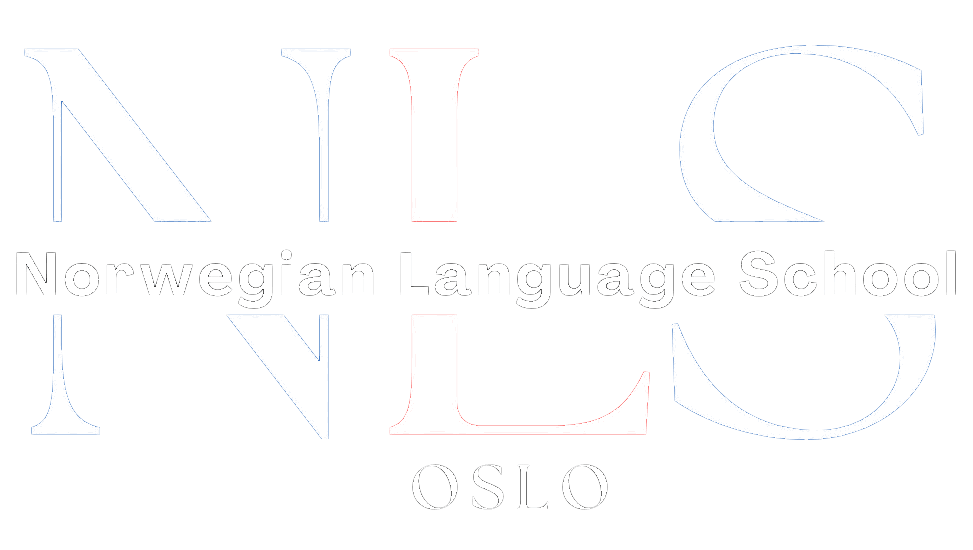

From Beginners to Advanced: 30 Norwegian Adverbs to Master
Adverbs are an essential part of any language, including Norwegian. They provide additional information about verbs, adjectives, and other adverbs, helping to add depth and nuance to the language. In Norwegian, adverbs play a crucial role in expressing time, frequency, manner, degree, place, direction, and comparison. Understanding and using adverbs correctly is key to becoming fluent in Norwegian.
There are several types of adverbs in Norwegian. Some common types include adverbs of time, frequency, manner, degree, place, direction, and comparison. Adverbs of time describe when an action takes place, while adverbs of frequency describe how often an action occurs. Adverbs of manner describe how something is done, while adverbs of degree describe the intensity or extent of an action. Adverbs of place describe where something happens, while adverbs of direction describe the movement or direction of an action. Finally, adverbs of comparison compare two or more things.
Table of Contents
ToggleBasic Norwegian Adverbs for Beginners
For beginners learning Norwegian, it is important to start with basic adverbs that are commonly used in everyday conversation. These adverbs are simple and easy to understand, making them perfect for beginners. Some common basic adverbs in Norwegian include “alltid” (always), “aldri” (never), “ofte” (often), “nå” (now), “snart” (soon), “fort” (quickly), “langsomt” (slowly), and “bra” (well).
Here are some examples of how these basic adverbs can be used in simple sentences:
– Jeg spiser alltid frokost om morgenen. (I always eat breakfast in the morning.)
– Han kommer aldri for sent til jobb. (He never arrives late for work.)
– Vi går ofte på kino i helgene. (We often go to the cinema on weekends.)
– Nå skal jeg lage middag. (Now I am going to cook dinner.)
– Snart begynner ferien min. (My vacation is starting soon.)
– Han løper fort. (He runs quickly.)
– Hun snakker langsomt. (She speaks slowly.)
– Jeg gjør det bra på prøven. (I did well on the test.)
When using adverbs in Norwegian, it is important to place them in the correct position in the sentence. In most cases, adverbs are placed after the verb they modify. However, there are some exceptions to this rule, so it is important to pay attention to the word order in Norwegian sentences.
Intermediate Norwegian Adverbs for Improvers
As you progress in your Norwegian language learning journey, you will encounter more complex adverbs that are used in longer sentences and descriptive writing. These adverbs add depth and detail to your language skills and allow you to express yourself more effectively. Some intermediate Norwegian adverbs include “forsiktig” (carefully), “nøye” (thoroughly), “tydeligvis” (obviously), “sannsynligvis” (probably), “heldigvis” (fortunately), “dessverre” (unfortunately), “muligens” (possibly), and “eventuelt” (possibly).
Here are some examples of how these intermediate adverbs can be used in descriptive writing:
– Han malte bildet nøye. (He painted the picture thoroughly.)
– Hun snakket tydeligvis ikke norsk. (She obviously didn’t speak Norwegian.)
– Det blir sannsynligvis regn i morgen. (It will probably rain tomorrow.)
– Heldigvis fant jeg nøklene mine. (Fortunately, I found my keys.)
– Dessverre gikk bussen akkurat forbi. (Unfortunately, the bus just passed by.)
– Muligens kommer jeg på festen senere. (Possibly, I will come to the party later.)
– Eventuelt kan vi møtes på kafeen. (Possibly, we can meet at the cafe.)
When using these intermediate adverbs, it is important to pay attention to their placement in the sentence. In most cases, they are placed after the verb they modify, but there may be exceptions depending on the sentence structure.
Advanced Norwegian Adverbs for Experts
For those who have reached an advanced level in Norwegian, there are rare and complex adverbs that are used in academic writing and research papers. These adverbs require a deep understanding of the language and are used to convey precise meaning. Some advanced Norwegian adverbs include “systematisk” (systematically), “presist” (precisely), “eksplisitt” (explicitly), “implisitt” (implicitly), “fundamentalt” (fundamentally), “essensielt” (essentially), “konsekvent” (consistently), and “eksepsjonelt” (exceptionally).
Here are some examples of how these advanced adverbs can be used in research papers and dissertations:
– Studien ble gjennomført systematisk. (The study was conducted systematically.)
– Resultatene viser presist sammenhengen mellom variablene. (The results precisely show the relationship between the variables.)
– Denne teorien er eksplisitt formulert i kapittel tre. (This theory is explicitly formulated in chapter three.)
– Implisitt antar vi at alle deltakerne er frivillige. (Implicitly, we assume that all participants are volunteers.)
– Fundamentalt sett er dette et spørsmål om etikk. (Fundamentally, this is a question of ethics.)
– Essensielt er dette en viktig oppdagelse innenfor medisinsk forskning. (Essentially, this is an important discovery in medical research.)
– Konsekvent bruk av denne metoden vil gi pålitelige resultater. (Consistent use of this method will yield reliable results.)
– Eksepsjonelt høye verdier ble funnet i denne studien. (Exceptionally high values were found in this study.)
When using these advanced adverbs, it is important to have a strong grasp of the Norwegian language and its nuances. These adverbs are often used in formal and academic contexts, so it is important to use them correctly and appropriately.
Common Norwegian Adverbs for Everyday Use
In everyday life, we often use adverbs to describe time, frequency, and duration. These adverbs help us express our habits, routines, and schedules. Some common Norwegian adverbs used for everyday use include “tidlig” (early), “sent” (late), “ofte” (often), “sjelden” (rarely), “lenge” (long), “kort” (short), “alltid” (always), and “aldri” (never).
Here are some examples of how these adverbs can be used in daily routines and schedules:
– Jeg står alltid tidlig opp om morgenen. (I always wake up early in the morning.)
– Han kommer sjelden sent til jobb. (He rarely arrives late for work.)
– Vi spiser ofte lunsj sammen. (We often have lunch together.)
– Jeg har lenge ønsket å reise til Norge. (I have long wanted to travel to Norway.)
– Hun har kort tid til å gjøre leksene sine. (She has a short time to do her homework.)
– Jeg har aldri vært i Oslo før. (I have never been to Oslo before.)
When using these adverbs, it is important to pay attention to their placement in the sentence. In most cases, they are placed after the verb they modify, but there may be exceptions depending on the sentence structure.
Norwegian Adverbs for Time and Frequency
In Norwegian, there are specific adverbs used to describe time and frequency. These adverbs help us express specific times and frequencies in our daily lives. Some common Norwegian adverbs for time and frequency include “nå” (now), “snart” (soon), “alltid” (always), “ofte” (often), “aldri” (never), “tidlig” (early), and “sent” (late).
Here are some examples of how these adverbs can be used in telling time and scheduling appointments:
– Jeg skal møte henne nå. (I am going to meet her now.)
– Vi skal dra på ferie snart. (We are going on vacation soon.)
– Han kommer alltid tidlig til avtaler. (He always arrives early for appointments.)
– Jeg trener ofte på treningsstudioet. (I often exercise at the gym.)
– Hun kommer aldri sent til jobb. (She never arrives late for work.)
When using these adverbs, it is important to place them in the correct position in the sentence. In most cases, adverbs of time and frequency are placed after the verb they modify.
Norwegian Adverbs for Manner and Degree
Adverbs can also be used to describe how something is done and to what extent. These adverbs add nuance and detail to our writing, allowing us to express actions and emotions more effectively. Some common Norwegian adverbs for manner and degree include “fort” (quickly), “langsomt” (slowly), “bra” (well), “dårlig” (poorly), “veldig” (very), “litt” (a little), “mye” (a lot), and “ekstremt” (extremely).
Here are some examples of how these adverbs can be used in describing actions and emotions:
– Han løper fort. (He runs quickly.)
– Hun snakker langsomt. (She speaks slowly.)
– Jeg gjør det bra på prøven. (I did well on the test.)
– Han spiller dårlig på pianoet. (He plays poorly on the piano.)
– Det er veldig kaldt ute i dag. (It is very cold outside today.)
– Jeg er litt trøtt etter en lang dag på jobb. (I am a little tired after a long day at work.)
– Hun spiser mye sjokolade. (She eats a lot of chocolate.)
– Det er ekstremt varmt i sommer. (It is extremely hot in the summer.)
When using these adverbs, it is important to place them in the correct position in the sentence. In most cases, adverbs of manner and degree are placed after the verb they modify.
Norwegian Adverbs for Place and Direction
Adverbs can also be used to describe location and movement. These adverbs help us express spatial relationships and give directions. Some common Norwegian adverbs for place and direction include “her” (here), “der” (there), “opp” (up), “ned” (down), “fram” (forward), “bak” (behind), “til høyre” (to the right), and “til venstre” (to the left).
Here are some examples of how these adverbs can be used in giving directions and describing travel:
– Kafeen er her. (The cafe is here.)
– Skolen er der borte. (The school is over there.)
– Gå opp trappen og du vil finne rommet mitt. (Go up the stairs and you will find my room.)
– Gå ned bakken og du vil se butikken. (Go down the hill and you will see the store.)
– Kjør fram til neste veikryss og ta til høyre. (Drive forward to the next intersection and turn right.)
– Huset ligger bak parken. (The house is behind the park.)
– Sving til venstre ved lyskrysset. (Turn left at the traffic light.)
When using these adverbs, it is important to place them in the correct position in the sentence. In most cases, adverbs of place and direction are placed after the verb they modify.
Norwegian Adverbs for Comparison and Contrast
Adverbs can also be used to compare and contrast different things. These adverbs help us express similarities and differences between two or more things. Some common Norwegian adverbs for comparison and contrast include “lik” (similar), “ulik” (different), “mer” (more), “mindre” (less), “like” (equally), “ulike” (differently), “enn” (than), and “som” (as).
Here are some examples of how these adverbs can be used in expressing similarities and differences:
– Han er lik faren sin. (He is similar to his father.)
– De to bildene er ulike. (The two pictures are different.)
– Hun har mer penger enn meg. (She has more money than me.)
– Han har mindre tid enn henne. (He has less time than her.)
– Vi liker begge å reise. (We both like to travel.)
– De to vennene oppfører seg ulikt. (The two friends behave differently.)
– Han er høyere enn meg. (He is taller than me.)
– Hun er like flink som ham. (She is as good as him.)
When using these adverbs, it is important to place them in the correct position in the sentence. In most cases, adverbs of comparison and contrast are placed after the verb they modify.
Tips for Mastering Norwegian Adverbs
To master Norwegian adverbs, it is important to practice using them in different contexts. Try incorporating adverbs into your everyday conversations and writing to become more comfortable with their usage. Additionally, reading and listening to Norwegian language materials will expose you to new adverbs and help you understand how they are used in context.
Online resources and language learning apps can also be valuable tools for improving your adverb skills. These resources often provide exercises and quizzes that allow you to practice using adverbs in a variety of situations. Take advantage of these resources to reinforce your understanding of Norwegian adverbs.
In conclusion, adverbs are an important part of the Norwegian language. They provide additional information about verbs, adjectives, and other adverbs, helping to add depth and nuance to the language. By understanding and using adverbs correctly, you can become more fluent in Norwegian and express yourself more effectively. Practice using adverbs in different contexts, read and listen to Norwegian texts and conversations, and seek feedback from native speakers to improve your adverb usage. With time and practice, you will become more confident in incorporating adverbs into your Norwegian language skills. So, embrace the power of adverbs and let them enhance your communication in Norwegian!
If you’re looking to expand your Norwegian language skills beyond adverbs, you might be interested in learning some Norwegian slang words to speak like a local. Check out this article: Speak Like a Local: Must-Know Norwegian Slang Words. It’s a great resource for adding some authentic and colloquial expressions to your vocabulary. And while you’re at it, don’t forget to explore the other language courses and articles available on NLS Norwegian Language School’s website. Happy learning!

Norwegian A1-A2
Course Overview The Norwegian A1-A2 course is an online program focused on teaching essential Norwegian grammar and vocabulary. It includes a variety of materials and topics, with opportunities to interact with a Norwegian teacher entirely online. Curriculum Highlights The course covers key areas such as grammar and vocabulary and topics such as family, daily life, education, work, traditions, and leisure activities. Who Should Enroll? This course is perfect for beginners or those at the A1 or A2 levels who want to improve their Norwegian skills. What You Get Access to the full Norwegian A1-A2 course. A monthly 1-hour online conversation with a teacher. Many written and oral assignments. Comprehensive information on Norwegian grammar, Norwegian vocabulary and how to use them, important sentence structures, etc. Tips on additional resources to further enhance your Norwegian learning.
0 students enrolled
Last updated Dec 10th, 2024
If you want to learn Norwegian, you can register for classes here. We look forward to hearing from you and helping you become fluent in Norwegian.
Refer a friend and get $150. Join the program here






